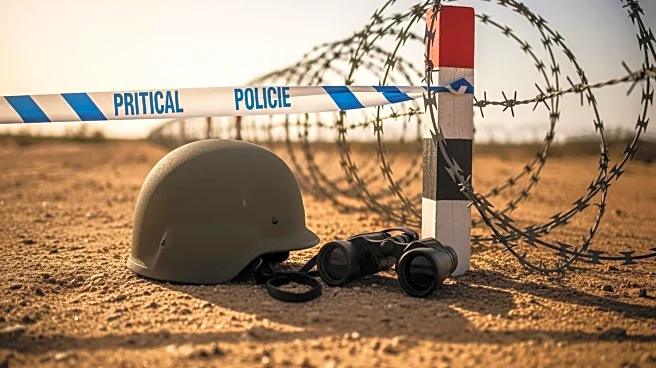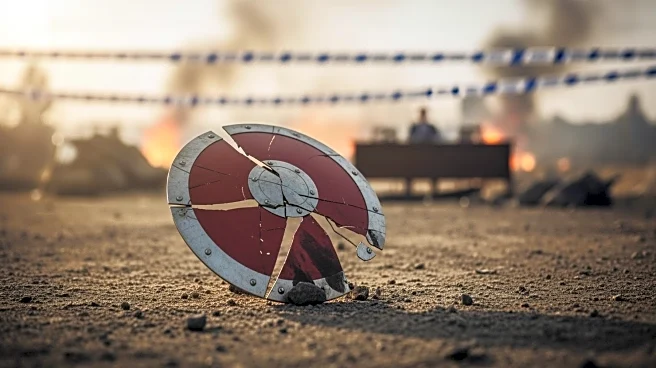What's Happening?
Israeli Defense Forces (IDF) have marked the 'yellow line' boundary in Gaza, following a ceasefire agreement brokered by the United States. This boundary signifies the area to which Israeli troops have withdrawn
as part of the agreement. Despite the ceasefire, Hamas has reportedly violated the deal on three occasions, including firing towards Israeli troops positioned behind the 'yellow line.' The marking of this boundary is a critical step in maintaining the ceasefire and ensuring the safety of troops in the region.
Why It's Important?
The marking of the ceasefire boundary is crucial for maintaining peace and stability in the region. It serves as a physical reminder of the agreement and helps prevent further escalations between Israeli forces and Hamas. The violations by Hamas highlight the fragility of the ceasefire and the ongoing tensions in the area. The U.S.-brokered agreement aims to reduce hostilities and facilitate a long-term resolution to the conflict, impacting regional security and international diplomatic relations.
What's Next?
Continued monitoring and enforcement of the ceasefire boundary are expected to be a priority for both Israeli forces and international mediators. The U.S. may increase diplomatic efforts to ensure compliance with the agreement and address any violations. Further negotiations may be necessary to strengthen the ceasefire and address underlying issues between Israel and Hamas.
Beyond the Headlines
The marking of the boundary also raises questions about the long-term viability of peace agreements in the region. The repeated violations by Hamas suggest challenges in achieving lasting peace and the need for comprehensive solutions that address the root causes of the conflict.











